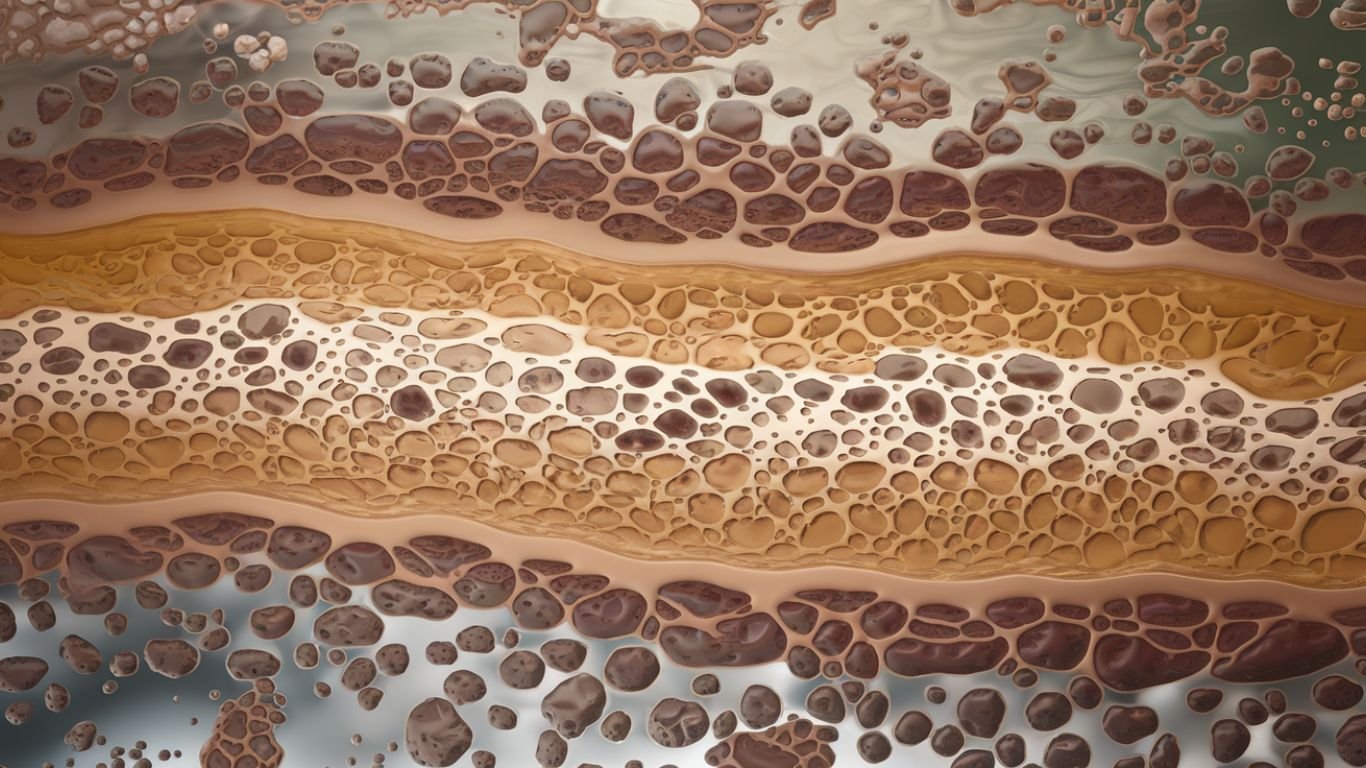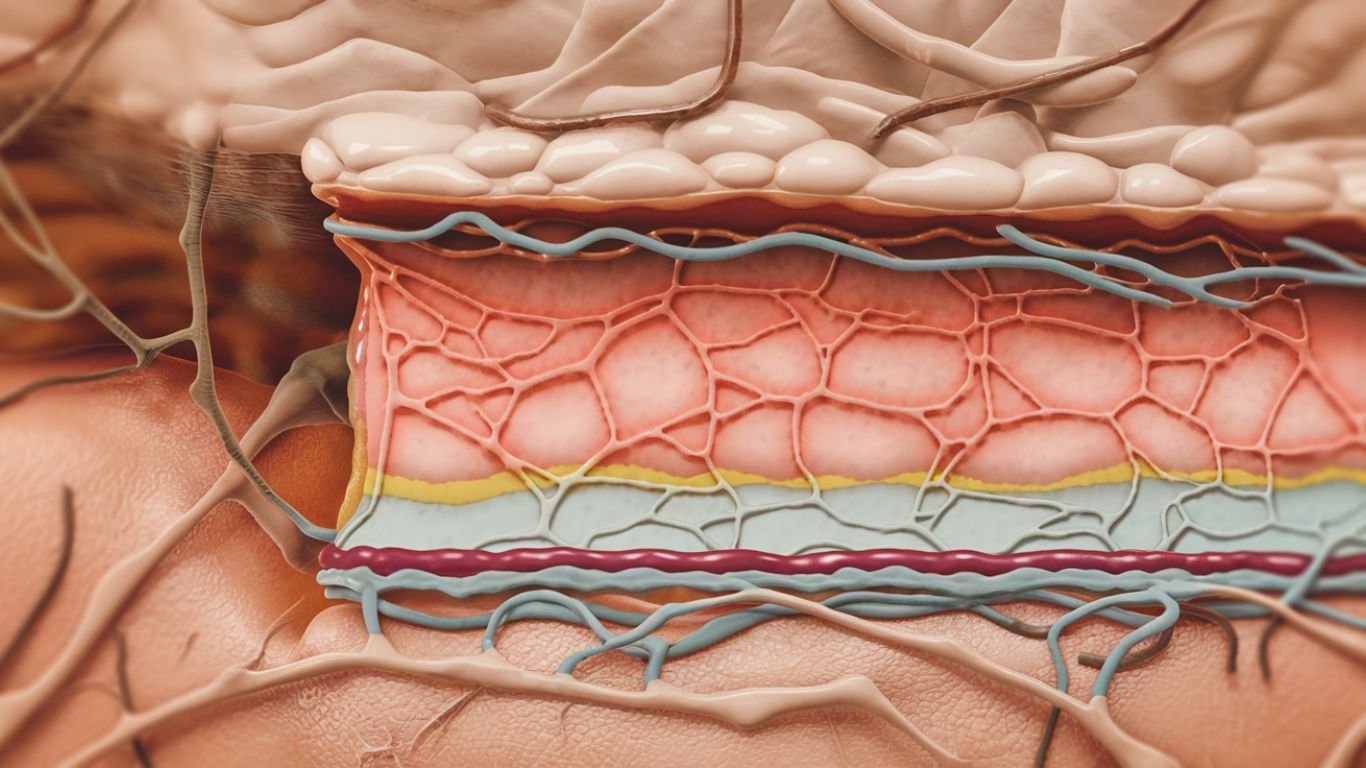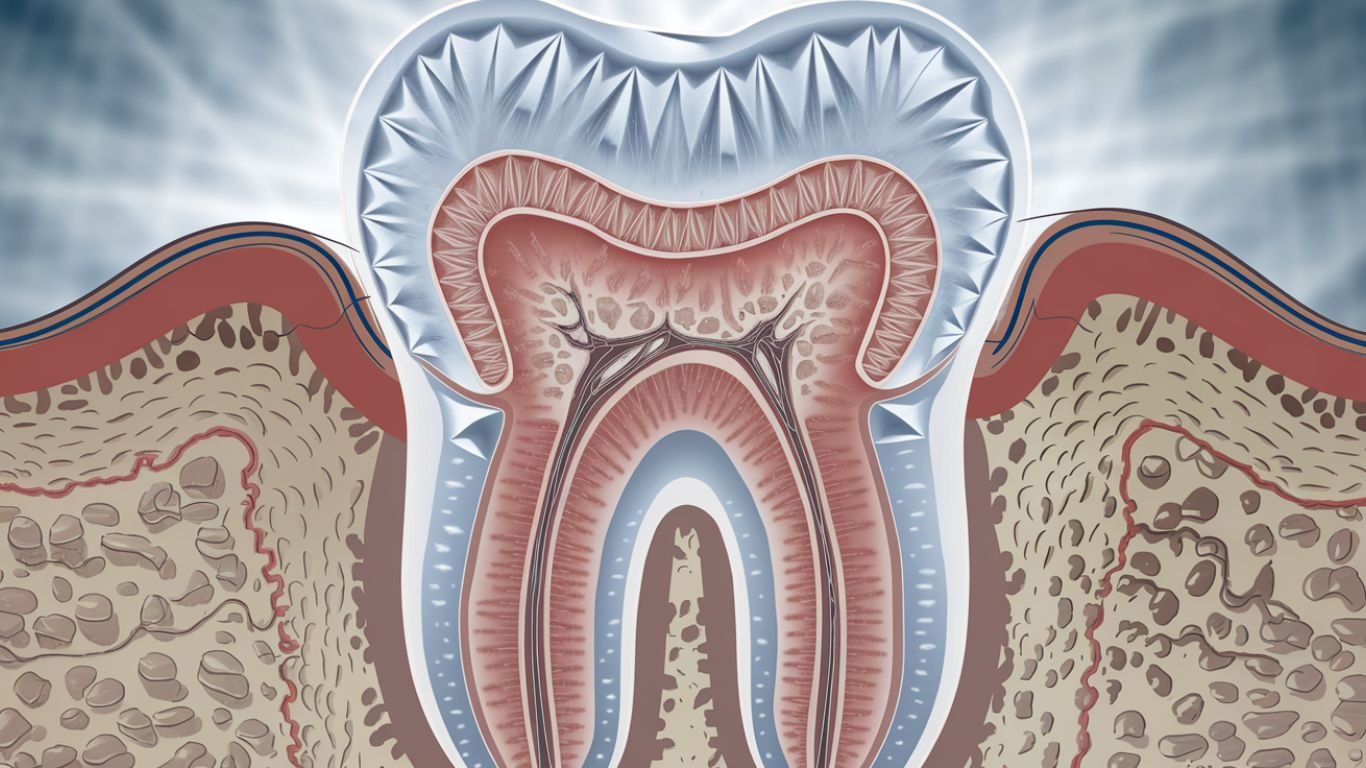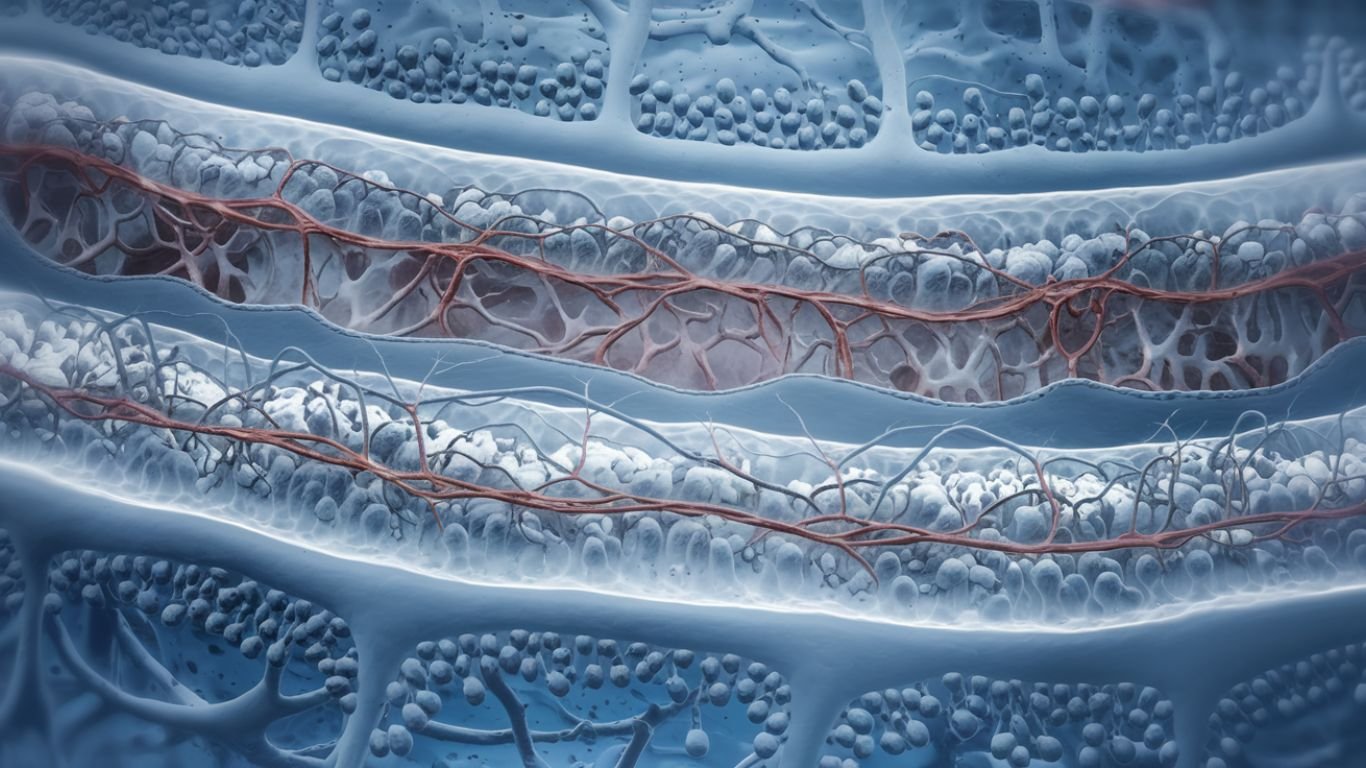Introduction
Have you ever wondered what holds your cells together, providing structure and support, while ensuring they perform their vital functions? Enter the basal lamina, an unsung hero of our body. This thin yet powerful layer serves as a foundation for cells, playing a crucial role in tissue health and repair. Let’s explore the fascinating world of the basal lamina.

What is the Basal Lamina?
The basal lamina is a specialized layer of extracellular matrix (ECM) found at the base of epithelial tissues. Imagine it as the foundation of a house, supporting cells and separating tissues. It’s incredibly thin but robust, ensuring cells stay organized and functional.
Components of the Basal Lamina
What Makes Up the Basal Lamina?
The basal lamina is primarily composed of:
- Laminins: These proteins provide structure and act as a glue for cells.
- Collagen Type IV: This unique collagen forms a supportive mesh.
- Proteoglycans and Glycoproteins: These molecules help with cell signaling and structural integrity.
Functions of the Basal Lamina

What Does the Basal Lamina Do?
The basal lamina serves multiple purposes:
- Support and Structure: It keeps cells in place.
- Filtering: In organs like the kidneys, it filters molecules.
- Cell Signaling: It helps cells communicate and decide their functions.
- Tissue Repair: It acts as a scaffold during healing.
How Does the Basal Lamina Differ from the Basement Membrane?
Though often used interchangeably, the basal lamina is only a part of the basement membrane. The latter also includes the reticular lamina, adding extra layers of support.
The Role of Basal Lamina in Tissue Repair

Healing and Regeneration
When tissues are injured, the basal lamina provides a framework for new cells to grow and repair damage. It’s like scaffolding at a construction site, guiding the rebuilding process.
Basal Lamina in Development and Growth
From Embryos to Adults
The basal lamina is crucial during development, guiding cells to their correct positions. It also plays a role in organ formation and growth.
Medical Conditions Related to the Basal Lamina
When Things Go Wrong
Disruptions in the basal lamina can lead to conditions like:
- Muscular Dystrophy: Weakness in muscle fibers.
- Kidney Diseases: Impaired filtering function.
- Cancer: Tumors may invade by breaking through the basal lamina.
Basal Lamina in Cancer Research
A Barrier and a Pathway
The basal lamina can either block cancer cells or provide a route for their spread. Understanding this dual role helps researchers develop better treatments.
How Scientists Study the Basal Lamina
Microscopes and Models
Scientists use advanced imaging techniques and lab models to observe the basal lamina, unraveling its complexities and discovering new insights.
The Future of Basal Lamina Research
What Lies Ahead?
From regenerative medicine to anti-cancer therapies, the basal lamina holds the key to groundbreaking advancements.
Everyday Examples of Basal Lamina at Work
A Behind-the-Scenes Hero
In your skin, the basal lamina ensures strength and elasticity. In your kidneys, it filters toxins, keeping you healthy.
How to Keep Your Basal Lamina Healthy
Tips for Maintenance
- Healthy Diet: Foods rich in antioxidants and proteins support ECM health.
- Regular Exercise: Improves overall cellular function.
- Avoid Toxins: Smoking and pollution can damage ECM components.
The Evolutionary Significance of Basal Lamina
A Step in Complexity
The basal lamina’s evolution marks a shift from simple organisms to complex multicellular life, highlighting its fundamental role in biology.
Comparing the Basal Lamina Across Species
Common Ground
While all animals have a basal lamina, its composition varies, reflecting diverse adaptations to different environments.
Why the Basal Lamina Matters to You
The Foundation of Life
The basal lamina isn’t just a biological term; it’s a vital part of what keeps you healthy, active, and resilient.
Conclusion
The basal lamina may be small, but its role in supporting and protecting our cells is monumental. By understanding and caring for this foundational structure, we gain insight into our health and potential avenues for medical breakthroughs. The next time you hear about cellular structures, remember the basal lamina—the quiet hero working tirelessly for your well-being.
FAQs
1. What is the basal lamina made of?
The basal lamina is composed of laminins, collagen type IV, and proteoglycans, forming a supportive extracellular matrix.
2. How is the basal lamina different from the basement membrane?
The basal lamina is a part of the basement membrane, which also includes the reticular lamina for added support.
3. What role does the basal lamina play in tissue repair?
The basal lamina acts as a scaffold, guiding cell growth and regeneration during tissue repair.
4. Why is the basal lamina important in cancer research?
It serves as both a barrier to cancer cells and a potential pathway for their spread, making it a focus in developing treatments.
5. How can I support my basal lamina’s health?
Maintain a healthy diet, exercise regularly, and avoid exposure to harmful toxins like cigarette smoke.
For More Visit, blogyt



